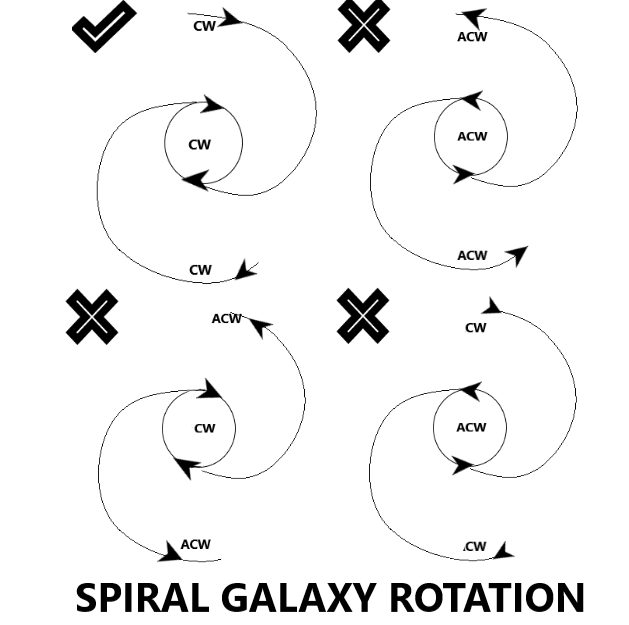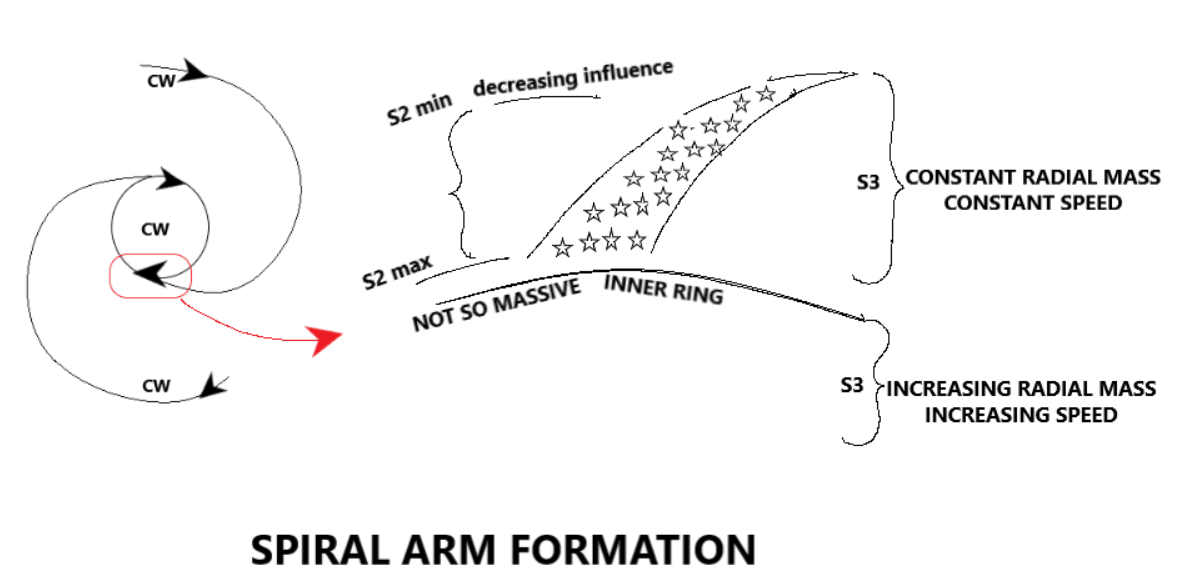SPACITY EXPLAINS SPIRAL GALAXY (NON-BARRED)
There are many forms of Galaxies that are formed in the universe. Spiral, Elliptical, cluster, Irregular and many others. Of these myriad types, 70-80% of Spiral type. So, let us study this type of galaxy further.
Elsewhere in Manthan we have addressed the genesis of galaxy, evolution of galaxy, star formation in galaxy and blackholes. They remain applicable for Spiral Galaxies also. However, we will concentrate on the Spiral arms of the Galaxy in this section.
Spacity explains how stars behave differently in the inner ring and the Spiral arm. Speed of stars increases linearly in the inner ring, while it almost remains constant thereafter in the spiral arm. But it does not explain as to why and how do the galaxies end up having spiral arms with such regularity.
Crucial to understanding the spiral formation is the orientation of spiral arm relative to the twist of inner ring. The sketch shows four possibilities of the combination of Clockwise and Anti Clockwise spin of spiral arm and the inner ring. Suggestion of spiral arms spinning in opposite direction to that of inner ring does not hold true. Because S3 the space force acting on inner ring will act in the same way. So, both inner ring and spiral arms must have same orientation. If the spin of inner ring and spiral arm is ACW, the stars in the spiral arm seem to come out of inner ring and spit outwards. Whereas if the spin is CW, then the stars in the spiral arm are being pulled in.
Applying Spacity at the edge of inner ring we see that space force S2 is strong force. It is the force between the Inner Ring as first mass and the spiral arm as the second mass. This will only have a pull effect on the stars in the spiral arm.So, this leaves us with only one possibility. Both Inner Ring and Spiral arms spinning clockwise. Having sorted that out, let us try and see how the spiral arms come into being in the first place.
Ionisation in nebular gas kicks off movement of majority of the gas to form inner ring. There will be some irregular mass of nebular gas on the edges that will remain unaffected by this movement. Stars nevertheless form simultaneously in these irregular masses. When Inner ring eventually assumes massive mass S2, starts influencing the sporadic gas mass/ star on the edge. This creates a first layer of stars of narrow bandwidth just outside the inner ring edge. The S2 also creates a second layer of stars just outside the first layer but with an offset. This is because S2 being dependent on distance its effect is lesser on the second layer. But stars in the first and second layer are travelling at almost same speed since S3 is the same at that radial distance due to approximation of mass of stars in other arms. This phenomenon eventually leads to spiral arms the way we see it.



0 Comments